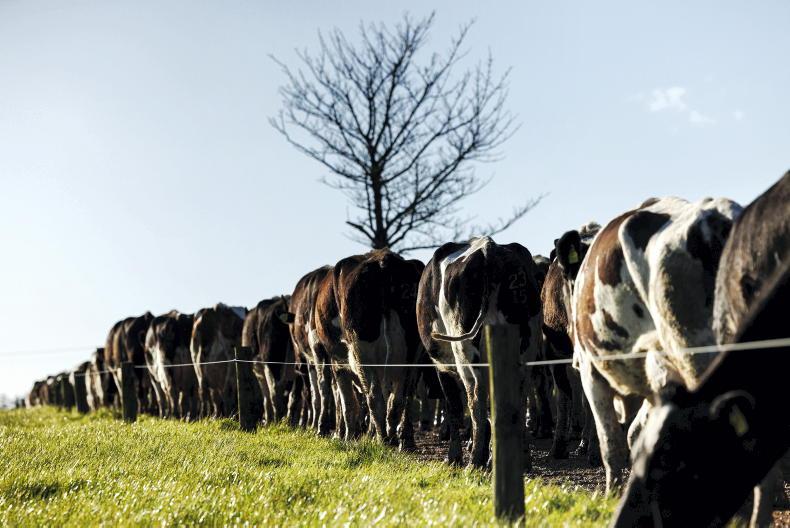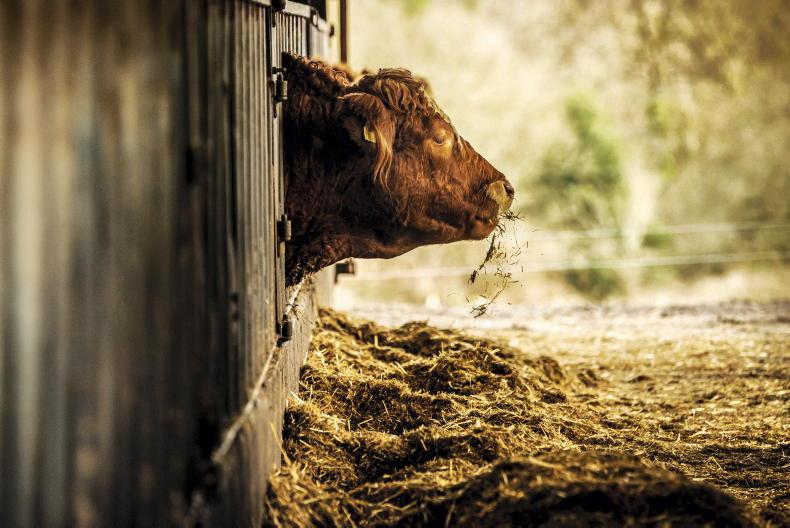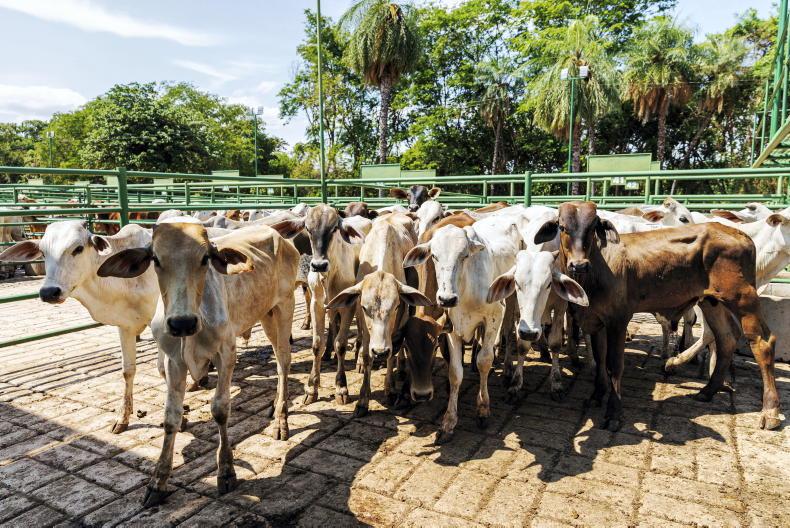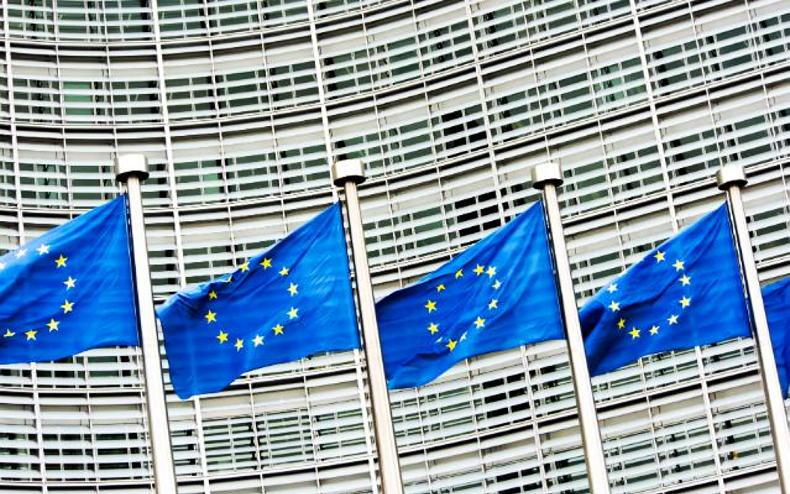Shrinking cattle herds in Europe will result in a fall in beef production of 1% in 2025, the European Commission has forecast in its short-term outlook.
Beef production across EU member states increased by 3% in the first half of 2024, mainly due to a significant increase in slaughtering in Italy (up 9%) and Poland (up 20%).
“The increase may have multiple causes, such as bad grazing conditions in central Europe and a growing demand in certain export markets (Turkey),” the outlook states.
However, by the end of 2024, beef production is expected to decline by 0.5% due to a shortage of young cattle in some EU countries, such as Italy and Spain.
“The tight beef supply continues to support EU beef producer prices and the price of live animals. The moderation of feed prices and high carcass prices are expected to favour better margins for fatteners.
"In 2025, the downward trend in beef production is expected to continue (by 1.0%) year-on-year due to shrinking herds,” the report said.
As consumer prices remain high, due to tight supply, per capita EU beef consumption in 2024 is expected to decline by 1.7% to 9.6kg.
Live exports out of the EU are expected to fall by 2% next year. Beef imports from Brazil for the first half of 2024 are down 15%, with UK imports down 0.2%.
This, the outlook added, is as a result of the EU’s main trading partners finding more rewarding markets in other parts of the world, such as the US. Beef imports to the EU could further decline by 1.5% in 2025.
Milk production

Milk supply will likely remain stable in Germany and Denmark, while a decline is likely in the Netherlands and Ireland.
The forecast is that EU milk deliveries will likely remain stable in 2024 and will be up +0.5% year-on-year, without adjusting for the leap year.
This is despite unfavourable weather conditions in some regions.
However, there is a significant mix in the development of raw milk supply among the EU countries.
Milk supply will likely remain stable in Germany and Denmark, while a decline is likely in the Netherlands and Ireland.
The report specifically notes that Ireland has been “impacted by the negative effect of wet conditions on pasture carrying capacity."
Milk deliveries in France, Spain and Italy might increase in 2024, and Polish milk production continues to show the increasing trend of the last few years.
Dairy herd
The development of the EU dairy herd is to continue its long-term declining trend and is expected to fall by 0.3% for 2024. Despite the decline in cow numbers, milk yields will likely increase by 0.9% for the year, although at a lower rate than in 2023.
For 2025, under an assumption of normal weather conditions and raw milk prices still above historical levels, the increasing trend in EU milk yields of 1% is assumed to still counterbalance the decreasing cow numbers, which are expected to fall again by 0.7%.
This, the report says, will lead to a marginal increase in milk deliveries of 0.2%, and a stable supply of milk solids.
Shrinking cattle herds in Europe will result in a fall in beef production of 1% in 2025, the European Commission has forecast in its short-term outlook.
Beef production across EU member states increased by 3% in the first half of 2024, mainly due to a significant increase in slaughtering in Italy (up 9%) and Poland (up 20%).
“The increase may have multiple causes, such as bad grazing conditions in central Europe and a growing demand in certain export markets (Turkey),” the outlook states.
However, by the end of 2024, beef production is expected to decline by 0.5% due to a shortage of young cattle in some EU countries, such as Italy and Spain.
“The tight beef supply continues to support EU beef producer prices and the price of live animals. The moderation of feed prices and high carcass prices are expected to favour better margins for fatteners.
"In 2025, the downward trend in beef production is expected to continue (by 1.0%) year-on-year due to shrinking herds,” the report said.
As consumer prices remain high, due to tight supply, per capita EU beef consumption in 2024 is expected to decline by 1.7% to 9.6kg.
Live exports out of the EU are expected to fall by 2% next year. Beef imports from Brazil for the first half of 2024 are down 15%, with UK imports down 0.2%.
This, the outlook added, is as a result of the EU’s main trading partners finding more rewarding markets in other parts of the world, such as the US. Beef imports to the EU could further decline by 1.5% in 2025.
Milk production

Milk supply will likely remain stable in Germany and Denmark, while a decline is likely in the Netherlands and Ireland.
The forecast is that EU milk deliveries will likely remain stable in 2024 and will be up +0.5% year-on-year, without adjusting for the leap year.
This is despite unfavourable weather conditions in some regions.
However, there is a significant mix in the development of raw milk supply among the EU countries.
Milk supply will likely remain stable in Germany and Denmark, while a decline is likely in the Netherlands and Ireland.
The report specifically notes that Ireland has been “impacted by the negative effect of wet conditions on pasture carrying capacity."
Milk deliveries in France, Spain and Italy might increase in 2024, and Polish milk production continues to show the increasing trend of the last few years.
Dairy herd
The development of the EU dairy herd is to continue its long-term declining trend and is expected to fall by 0.3% for 2024. Despite the decline in cow numbers, milk yields will likely increase by 0.9% for the year, although at a lower rate than in 2023.
For 2025, under an assumption of normal weather conditions and raw milk prices still above historical levels, the increasing trend in EU milk yields of 1% is assumed to still counterbalance the decreasing cow numbers, which are expected to fall again by 0.7%.
This, the report says, will lead to a marginal increase in milk deliveries of 0.2%, and a stable supply of milk solids.











SHARING OPTIONS